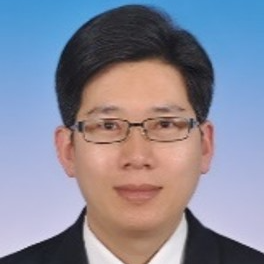Advanced Optical Manufacturing Technologies and Applications
A special issue of Micromachines (ISSN 2072-666X). This special issue belongs to the section "D:Materials and Processing".
Deadline for manuscript submissions: closed (15 October 2024) | Viewed by 4266
Special Issue Editors
Interests: intelligent precision machining; surface integrity; precision measurement
Special Issues, Collections and Topics in MDPI journals
Interests: alloy
Special Issues, Collections and Topics in MDPI journals
Interests: precision engineering; ultra-precision machining technology
Special Issues, Collections and Topics in MDPI journals
Interests: ultra-precision machining of difficult-to-machine materials; elliptical vibration diamond cutting and ultra-precision micro-manufacturing of functional micro–nano structures
Special Issues, Collections and Topics in MDPI journals
Special Issue Information
Dear Colleagues,
This Special Issue will publish selected papers from the 2nd International Conference on Advanced Optical Manufacturing Technologies and Applications, and the 4th International Forum of Young Scientists on Advanced Optical Manufacturing (AOMTA and YSAOM 2024) (https://b2b.csoe.org.cn/meeting/YSAOM2024.html) on micromachines in Xi’an, China, 5–7th July 2024.
We aim to collect high-quality research papers and review articles from AOMTA and YSAOM 2024, which focus on advanced optical manufacturing technology, optical intelligent manufacturing, ultra-precision manufacturing, precision measurement, intelligent sensing and control, and material science. This conference will cover the following main topics:
- Large optical mirror and telescope technology;
- Micro-nanostructure optics and manufacturing technologies;
- Ultra-precision machining technology for optical complex surfaces and functional structures;
- Ultra-precision optical measurement technology and equipment;
- High-performance manufacturing technology for short-wavelength optical components;
- High-efficiency optical precision processing technologies and new methods;
- High-performance optical microstructure manufacturing processes and equipment;
- Advanced optical coating technology and equipment;
- Optical design, assembly, and system modeling technology;
- Manufacturing and applications of optofluidic chip and liquid crystal optics.
Papers attracting the most interest at the conference, or that provide novel contributions, will be selected for publication in Micromachines. These papers will be peer-reviewed for the validation of research results, developments, and applications.
Prof. Dr. Jiang Guo
Prof. Dr. Yebing Tian
Prof. Dr. Zhenzhong Wang
Prof. Dr. Jianguo Zhang
Guest Editors
Manuscript Submission Information
Manuscripts should be submitted online at www.mdpi.com by registering and logging in to this website. Once you are registered, click here to go to the submission form. Manuscripts can be submitted until the deadline. All submissions that pass pre-check are peer-reviewed. Accepted papers will be published continuously in the journal (as soon as accepted) and will be listed together on the special issue website. Research articles, review articles as well as short communications are invited. For planned papers, a title and short abstract (about 100 words) can be sent to the Editorial Office for announcement on this website.
Submitted manuscripts should not have been published previously, nor be under consideration for publication elsewhere (except conference proceedings papers). All manuscripts are thoroughly refereed through a single-blind peer-review process. A guide for authors and other relevant information for submission of manuscripts is available on the Instructions for Authors page. Micromachines is an international peer-reviewed open access monthly journal published by MDPI.
Please visit the Instructions for Authors page before submitting a manuscript. The Article Processing Charge (APC) for publication in this open access journal is 2100 CHF (Swiss Francs). Submitted papers should be well formatted and use good English. Authors may use MDPI's English editing service prior to publication or during author revisions.
Keywords
- optical precision processing technologies
- ultra-precision machining technology
- micro-nanostructure optics and manufacturing technologies
Benefits of Publishing in a Special Issue
- Ease of navigation: Grouping papers by topic helps scholars navigate broad scope journals more efficiently.
- Greater discoverability: Special Issues support the reach and impact of scientific research. Articles in Special Issues are more discoverable and cited more frequently.
- Expansion of research network: Special Issues facilitate connections among authors, fostering scientific collaborations.
- External promotion: Articles in Special Issues are often promoted through the journal's social media, increasing their visibility.
- e-Book format: Special Issues with more than 10 articles can be published as dedicated e-books, ensuring wide and rapid dissemination.
Further information on MDPI's Special Issue policies can be found here.









